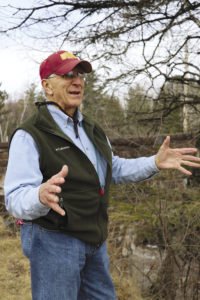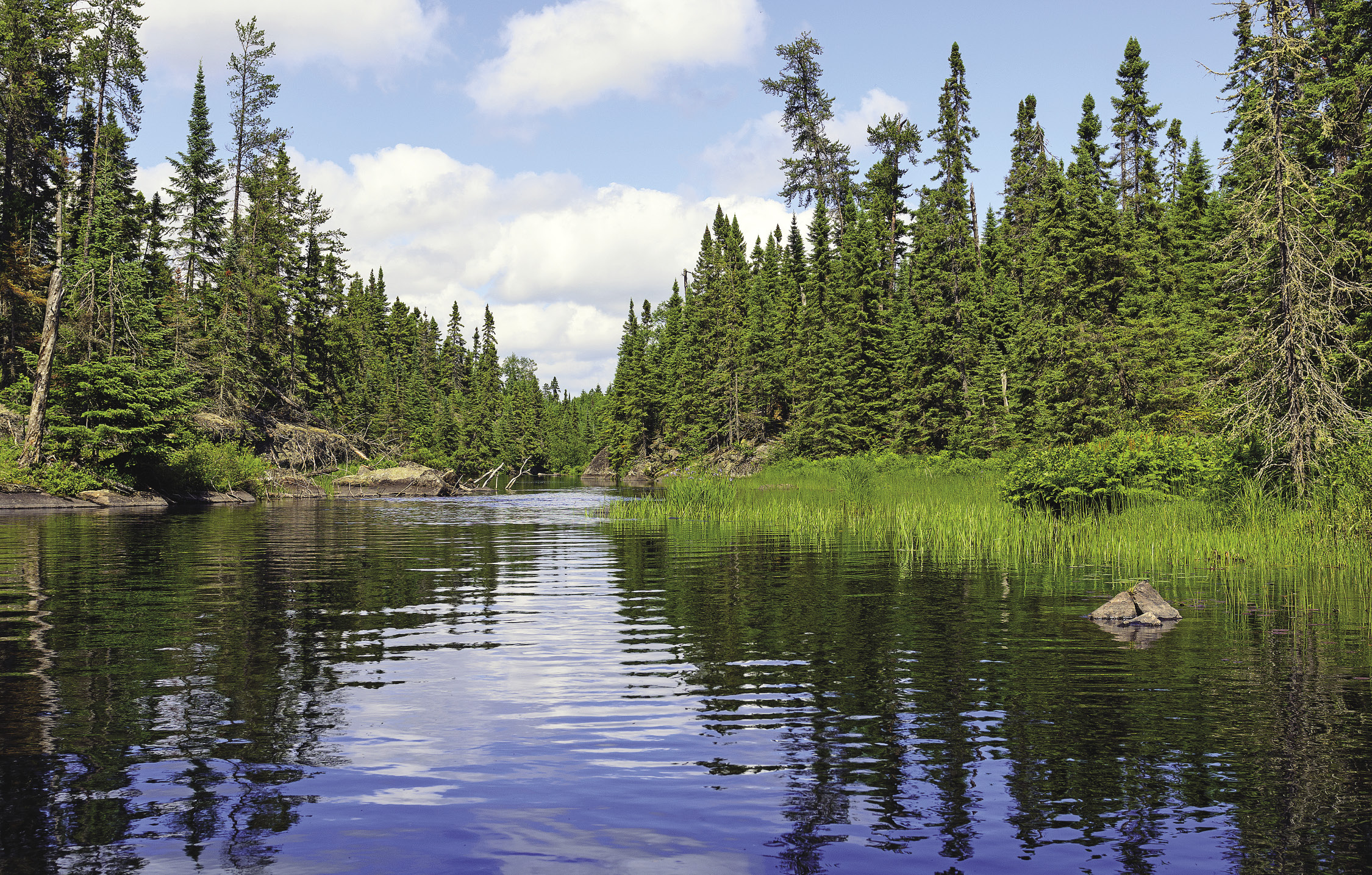If you’re interested in protecting Minnesota’s water resources for generations to come, Duluthian and renown conservationist Dave Zentner has the solution—and it’s you.
“There is no elixir, but I think that the environmental conservation movement has to move back to neighbor-to-neighbor, grassroots, bottoms up, putting people in the picture,” said Zentner, who is in his early 80s and a local legend among Minnesota conservationists.
Challenges of Citizen Engagement
The way he sees it is that some people, especially younger generations, are put off by the current “top-down” environmental organizations—you know, the organizations that seek donations, develop policies, and talk with the Legislature about the issues on behalf of the members. Zentner said the organizations with “check-writing memberships” hold an important place in our communities and in our state, however, “they don’t do a very good job of having the average man or woman see themselves as a steward of water and wetlands.”
Zentner has thought a lot about this topic. One of his passions is seeking ways to connect communities and boost citizen involvement. Another one of his passions is getting involved with local conservation issues.
A Lifetime of Conservation
Zentner has a long and significant history of being involved in Minnesota’s conservation efforts. After retiring from a successful financial planning and insurance career, Zentner helped lead the campaign to pass the Clean Water, Land and Legacy Amendment, which generates more than $300 million each year to protect water, wetlands, wildlife, parks, trails, and the arts and cultural heritage in Minnesota.
Recently, funding from the amendment helped the Minnesota Department of Natural Resources, the Lake Superior Steelhead Association, and several other agencies complete a habitat project that stabilized 2,200 feet of eroding clay banks along the upper Knife River, which is a critical habitat for steelhead spawning. This year, there are a number of local projects planned, including one that will restore and protect watersheds and streams in Minnesota’s Lake Superior coastal region, and another initiative will provide local governments with grants to support parks and trails in northeast Minnesota.
Another feather in Zentner’s cap—in the 1970s, he served as the national president of the Izaak Walton League of America, which is a nearly 100-year-old national conservation organization with more than 43,000 members.
He also joined forces with people across the state to help establish Voyageurs National Park, he’s worked for years to protect the Boundary Waters Canoe Area Wilderness, and he served on the board of the Minnesota Pollution Control Agency…the list goes on. It’s safe to say that Zentner, who is also an avid angler and hunter, knows what he’s talking about.

On a personal note, Zentner married his high school sweetheart Margo when he was a junior at the University of Minnesota-Duluth, and the pair don’t miss a Bulldogs’ hockey game if they can help it.
Finding the Middle Ground
Part of Zentner’s conservation success comes from his ability to observe issues from all sides, and understand other people’s perspectives. Also, he has the ability to think about the issue as a whole, rather than just the here and now.
“You need to divorce yourself from the instant case long enough to say, ‘what are we doing on a daily basis that will make a difference long-term,’” said Zentner.
Zentner said that the way we live today is complicated, and it’s time for us as individuals to confront the reality of those difficult decisions.
“There are no easy answers,” he said. “But the need for technology does not dismiss the equally compelling need to try and use our natural resources for the highest and best use.”
In Zentner’s eyes, the solution to obtain citizen involvement is three-fold. First, individuals and organizations need to educate people on our natural resources and help them understand that water conservation starts with them. Then, organizations need to open themselves up to those from other backgrounds or generations, to obtain greater volunteerism, opinions and ideas. Finally, Zentner said if conservation organizations still want to remain relevant today, they need to change the structure of their meetings, becoming flexible to reach a new generation of people.
“We are pretty rich and diverse with conservation organizations in northeast Minnesota,” said Zentner, and if those organizations want to compete and attract new members, he said they should provide opportunities for people to become educated on water conservation and develop the foundation to think for themselves. State park visitor centers and other local resources like Hartley Park in Duluth can teach people to see themselves as stewards of our natural resources, and learn how to personally protect them.
Why Your Involvement is Important
It’s clear that water’s impact locally is tremendous. However, Zentner said people often forget that water conservation “is not just about wild things. This is about us.”
Our local paper, taconite and agricultural industries rely on water to operate. Also, following best practices when it comes to water management is fiscally prudent. Citing the 2012 floods that devastated Duluth and other North Shore communities, Zentner said that proper management of water saves people billions of dollars in disaster relief, as wetlands hold watersheds together and local streams are conduits of storm water into Lake Superior.
“People don’t take into account the bigger picture,” said Zentner. “They don’t understand that how we manage water changes and increases the frequency and severity of floods.”
Water conservation and preservation allows us to continue to support the wide diversity of wildlife we have in northeast Minnesota.
“It’s all the living things we love to be around,” said Zentner. “Everything we love to see. From the mallard with its clutch walking across the road, to the fish we like to see, catch, eat, to the herons, to the things that give us richness in our lives.”
Also, healthy wetlands are carbon sinks for climate change, and water conservation can help people protect the planet for the long-term, and avoid the costs related to managing climate change in the future.
Most importantly, “We need not be ashamed to put in the moral imperative. We need to take care of the things that live around us that depend on actions we take for their existence,” said Zentner.
How to Get Involved
If water conservation starts with you, where can you start?
Begin by staying up-to-date on local issues. Read articles from trusted news organizations like Northern Wilds, Minnesota Outdoor News, Minneapolis StarTribune, and others.
Learn how your tax dollars are being spent. Take time to understand the Clean Water, Land, and Legacy Amendment and how your money is being put to work locally: legacy.leg.mn.
When visiting national, state or city parks and other public spaces, see if you can find educational materials to help you connect your outdoor experience with the big picture of Minnesota’s natural resources.
Manage your property with care and ensure you’re taking water resources into consideration. Explore the Minnesota Board of Water and Soil Resources website to learn more: bwsr.state.mn.us.
Consider becoming involved in a local water conservation organization like the St. Louis River Alliance, Friends of the Boundary Waters Wilderness, Minnesota Naturalist’s Association and others. Find them with a quick online or Facebook search.




